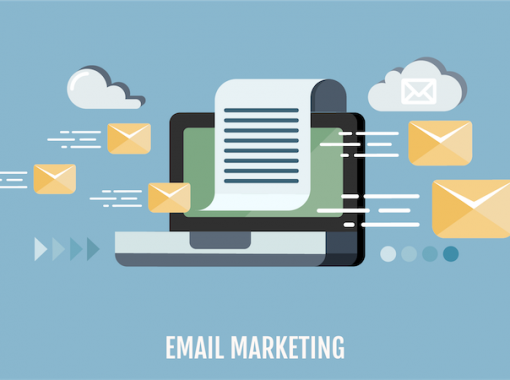Email marketing can be very effective for businesses. But how much should you spend?
Email marketing budgets can vary widely. Some businesses spend a little, while others invest heavily. Knowing the right amount to spend can be tricky. It’s important to find a balance that fits your goals and resources. Spending too much or too little can impact your results.
In this blog post, we will explore key factors to help you decide on your email marketing budget. We’ll look at industry standards, business size, and marketing objectives. Understanding these factors will help you make informed decisions. This way, you can maximize the return on your email marketing investment. Let’s dive in and find the best budget for your needs!
Importance Of Email Marketing
Email marketing remains one of the most powerful tools for businesses. It helps in reaching the target audience directly. But how much should you spend on it? The answer depends on many factors. Before diving into the budget, let’s understand the importance of email marketing.
Building Relationships
Email marketing helps build strong relationships with customers. It allows businesses to communicate directly with their audience. Personalized emails make customers feel valued. This can increase their loyalty to the brand.
Regular updates keep customers informed. It can be about new products, services, or special offers. Staying in touch with customers helps in maintaining a connection. This connection can lead to repeat business and referrals.
Driving Conversions
Email marketing can drive conversions effectively. Special promotions and discounts can be sent directly to customers. This encourages them to make a purchase. Personalized recommendations can also boost sales.
Emails can be used to remind customers of abandoned carts. This can recover lost sales. A well-crafted email can turn a prospect into a paying customer. It is a cost-effective way to increase revenue.

Credit: endertech.com
Budget Allocation Basics
Determining the right budget for email marketing is crucial for success. You need a clear plan to allocate your budget effectively. This section covers the basics of budget allocation for email marketing. You will learn about percentage of revenue and industry benchmarks to guide your decisions.
Percentage Of Revenue
Allocating a percentage of your revenue to email marketing is a smart strategy. Experts suggest setting aside 1-3% of your total revenue for digital marketing. Out of this, you can allocate 20-30% specifically for email marketing.
For example, if your annual revenue is $500,000, you would allocate $5,000 to $15,000 for digital marketing. From this, $1,000 to $4,500 should be dedicated to email marketing.
| Annual Revenue | Digital Marketing Budget (1-3%) | Email Marketing Budget (20-30% of Digital Marketing) |
|---|---|---|
| $100,000 | $1,000 – $3,000 | $200 – $900 |
| $500,000 | $5,000 – $15,000 | $1,000 – $4,500 |
| $1,000,000 | $10,000 – $30,000 | $2,000 – $9,000 |
Industry Benchmarks
Each industry has different benchmarks for email marketing budgets. Here are some average percentages of total marketing budgets allocated to email marketing by industry:
- Retail: 15-20%
- Financial Services: 20-25%
- Healthcare: 10-15%
- Technology: 25-30%
Knowing these benchmarks helps you compare your budget to industry standards. This ensures you are not under- or overspending. Always consider your unique business needs and goals. Adjust your budget accordingly for the best results.
Factors Influencing Spend
Determining how much to spend on email marketing depends on several factors. These factors shape your budget and strategy. Let’s explore the primary ones: business size and campaign goals.
Business Size
Your business size plays a critical role in your email marketing budget. Larger businesses often have more resources. They can afford to spend more on email marketing. Smaller businesses need to be more cautious. They must ensure they get the best return on investment (ROI).
Here’s a table that illustrates typical email marketing budgets based on business size:
| Business Size | Email Marketing Budget (monthly) |
|---|---|
| Small Business | $100 – $500 |
| Medium Business | $500 – $2,000 |
| Large Business | $2,000 – $10,000+ |
Small businesses should focus on cost-effective strategies. Medium businesses can invest in more advanced tools and services. Large businesses can allocate bigger budgets for comprehensive campaigns.
Campaign Goals
What are you aiming to achieve with your email campaign? Your goals will influence your spending. Here are some common campaign goals:
- Brand Awareness: Requires frequent emails, thus higher costs.
- Lead Generation: Involves targeted emails, often with moderate costs.
- Customer Retention: Needs personalized emails, which can be costly.
- Sales Promotions: Often needs a mix of frequency and personalization, impacting budget.
Focus on your primary goals. Allocate your budget accordingly. If your goal is brand awareness, you may need to spend more on frequent newsletters. For lead generation, targeted campaigns might be more effective and require a different budget allocation.
Understanding these factors can help you decide your email marketing budget. Make informed decisions to maximize your ROI.

Credit: www.digitalstrike.com
Cost Components
Email marketing is a powerful tool for businesses. But how much should you spend on it? Understanding the cost components helps you budget effectively. Let’s break down the key cost components of email marketing.
Email Software
Investing in the right email software is crucial. The cost varies based on features and the number of subscribers. Basic plans start low, but advanced features can increase the price. Consider your needs carefully. Automation, analytics, and support can add to the cost. But they can also boost your campaign’s success.
Content Creation
Creating engaging content is essential. It involves writing, design, and sometimes video. You may choose to hire freelancers or agencies. Costs can range widely. Quality content attracts and retains subscribers. It makes your emails stand out. Budget for regular content updates to keep your audience interested.
Evaluating Roi
Understanding how much to spend on email marketing can be tricky. Evaluating the Return on Investment (ROI) is essential for making informed decisions. This involves tracking key metrics and adjusting strategies accordingly. Let’s dive deeper into these aspects to help maximize your email marketing budget.
Tracking Metrics
Tracking metrics is crucial for evaluating the effectiveness of your email campaigns. Focus on the following key metrics:
- Open Rate: The percentage of recipients who open your email.
- Click-Through Rate (CTR): The percentage of recipients who click on links within your email.
- Conversion Rate: The percentage of recipients who complete a desired action, such as making a purchase.
- Bounce Rate: The percentage of emails that did not reach the recipient’s inbox.
- Unsubscribe Rate: The percentage of recipients who opt out of your email list.
By regularly monitoring these metrics, you can identify which campaigns perform best and which need improvement.
Adjusting Strategies
Adjusting your strategies based on the metrics you track is vital. Here are some tips:
- Optimize Subject Lines: Ensure they are engaging and relevant to increase open rates.
- Segment Your Audience: Group your audience based on demographics or behavior for more targeted campaigns.
- Test Different Formats: Experiment with different email designs and content to see what resonates most.
- Personalize Content: Use the recipient’s name or past purchase history to make emails more personal.
- Review Send Times: Identify the best times to send emails to increase open and click-through rates.
By making these adjustments, you can improve the performance of your email campaigns and get better ROI.
Expert Opinions
Understanding how much to spend on email marketing is essential. Experts provide valuable insights based on their experience. Their opinions can guide you to make informed decisions.
Marketing Gurus
Marketing gurus like Neil Patel and Ann Handley emphasize allocating a budget to email marketing. They suggest a range based on the size and scope of your business. Here are a few insights:
- Neil Patel: Recommends spending 10-20% of your marketing budget on email marketing.
- Ann Handley: Suggests investing in high-quality email content and automation tools.
These experts agree: quality content and automation are key investments.
Case Studies
Case studies provide real-world examples of successful email marketing campaigns. They illustrate how businesses allocate their budgets effectively. Here are two notable case studies:
| Company | Budget Allocation | Results |
|---|---|---|
| Company A | 15% of total marketing budget | Increased ROI by 40% |
| Company B | 20% of total marketing budget | Boosted customer retention by 35% |
These examples show the impact of investing in email marketing. A significant portion of the budget can lead to substantial returns.
Common Spending Mistakes
Email marketing can be a powerful tool. But many businesses make errors. These mistakes lead to wasted money. Let’s explore the common spending mistakes.
Overlooking Data
Data is crucial in email marketing. Many businesses ignore this. They do not track their campaigns. They miss out on valuable insights. Without data, you cannot know what works. Or what does not work. Tracking data helps improve your strategy. It shows you open rates and click rates. It shows what emails get the most attention.
Invest in tools that help you analyze your campaigns. Even simple tools can provide useful data. Use this data to adjust your strategies. Make data-driven decisions. This will help you spend your money wisely.
Ignoring Segmentation
Not all your subscribers are the same. Treating them as one group is a mistake. This leads to low engagement. And wasted money. Segmenting your audience is key. It means dividing your list into smaller groups. Based on their interests. Or their behavior. Or their purchase history.
Send targeted emails to these segments. Personalized messages are more effective. They have higher open and click rates. This means better returns on your investment. Ignoring segmentation can cost you. Make sure to use it in your strategy.

Credit: www.800.com
Optimizing Your Budget
Optimizing your email marketing budget ensures you get the best returns. Smart allocation of resources helps improve your campaign’s effectiveness. Let’s explore some strategies to make the most of your email marketing budget.
Testing Strategies
Testing different strategies can improve your email marketing efforts. A/B testing allows you to compare two versions of an email. This helps determine which version performs better. For example, you can test different subject lines. Or you can test different email designs. Use the results to guide future campaigns.
Leveraging Automation
Automation tools help save time and money. Set up automated welcome emails for new subscribers. This creates a good first impression. Also, automate follow-up emails for better engagement. Use triggered emails for specific customer actions. This ensures timely and relevant communication.
Frequently Asked Questions
How Much Should Small Businesses Spend On Email Marketing?
Small businesses should spend 5-10% of their marketing budget on email marketing. Adjust based on goals and ROI.
What Factors Influence Email Marketing Costs?
Email marketing costs depend on list size, frequency, design, and software. Campaign complexity also plays a role.
Is Email Marketing Cost-effective?
Yes, email marketing is cost-effective. It has a high ROI and reaches a targeted audience efficiently.
How Can I Reduce Email Marketing Costs?
To reduce costs, use simple designs, segment your list, and choose affordable email marketing tools.
How Do I Measure The Roi Of Email Marketing?
Measure ROI by tracking open rates, click-through rates, conversions, and revenue generated from email campaigns.
Conclusion
Finding the right email marketing budget depends on your business needs. Test various strategies to see what works best. Track your results to adjust spending effectively. Focus on quality content and audience engagement. A flexible budget allows growth as your business scales.
Remember, effective email marketing balances cost and return. Use data to guide your choices. Investing wisely ensures a strong, lasting connection with your audience. Keep your goals clear and adjust as needed for success.

Leave a Reply